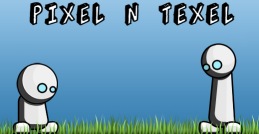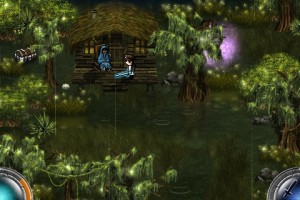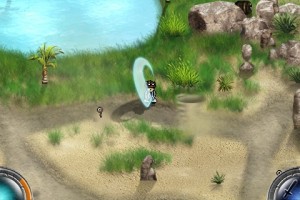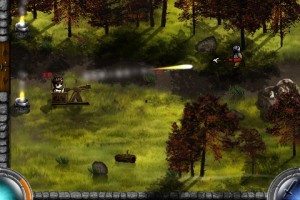 Having worked with some of the most established names in the videogame industry, how did the two of you reach the decision to strike out on your own as indie developers? Now that you’ve been at this awhile, is there anything you’ve come to miss about working in the big corporate environment?
Having worked with some of the most established names in the videogame industry, how did the two of you reach the decision to strike out on your own as indie developers? Now that you’ve been at this awhile, is there anything you’ve come to miss about working in the big corporate environment?
I think we’d come to a point in our careers where we felt the timing was right to strike out on our own. We’ve both worked on some great games for great companies, but the opportunity to have total control over a title was too good to pass up! It also seemed like a lot of studios were moving towards social gaming, and I don’t think either one of us were too interested in that.
There’s not a lot to miss about working in a corporate environment, but I would say the friends/camaraderie of working in a bigger place is something we both miss. We also miss having a professional QA team, although playing your own game over and over has benefits. I think a little cabin fever has also set in, working on Fara day and night!
 What are a few of your favorite classic Action RPGs, and how have these influenced your approach to Fara, whether in terms of game mechanics, technical specs or visual presentation?
What are a few of your favorite classic Action RPGs, and how have these influenced your approach to Fara, whether in terms of game mechanics, technical specs or visual presentation?
It’s probably a little cliché, but our game definitely draws its biggest inspiration from The Legend of Zelda: A Link to the Past. We’ve used mechanics from that game all over Fara, such as gaining new abilities to access new areas (like the grapple hook), as well as the general feel of the combat and dungeons.
Visually, we wanted to take full advantage of the Apple hardware, as well as our engine that we wrote from the ground up. Our intention was that the game would have the feeling of a living painting, and that we’d repeat elements as little as possible. The tile-based art of older Action RPGs was something we wanted to avoid.
Did Fara’s development cycle end up being longer or more resource-intensive than you expected when you first went into the project? If so, do you have any advice on this subject for other indie teams who are just starting out?
The dev cycle was definitely longer than we had planned! Originally, we thought that we’d be through developing within six months, but it’s really been more like ten months. Fortunately, we used good tracking software and had several “reality check meetings” throughout the process, so nothing was a huge surprise.
Our advice for other devs is that you have plenty of resources to keep your studio going (if you are developing full time, have finances that will carry you two times longer than you feel is necessary). Also make use of professional quality bug/project tracking software like Redmine. It helps a lot!
 What are the key elements of a well-run Kickstarter campaign, judging from your own experience?
What are the key elements of a well-run Kickstarter campaign, judging from your own experience?
Having a good video goes a long way. Most successful projects have a great, well edited video to go along with the campaign. I’d also measure the size of your personal social network before you start. If you’re not connected with a ton of folks, you can run a contest via your Facebook/Twitter to get some buzz going. Also, reach out to people in the press that might be interested in a project similar to yours.
One interesting thing we picked up on when we previewed Fara was the lack of statistics – visible values for strength, HP, defense and so on. What do you hope to accomplish with this kind of streamlining?
With Fara, we really tried to distill the Action RPG experience into bite size, iPhone ready chunks. We wanted people to feel like they could accomplish something within a few minutes, and we felt that overloading the game with stats would detract from that. Basically, we want people to jump into the game and start having fun right away, without having to worry about how they were balancing a bunch of numbers the last time they played. Fara also saves in almost every screen, so it’s easy to hop back on and continue your journey.
 Is Fara’s finalized interface pretty much what the team had in mind from the very beginning, or was there ever a point when you entertained control options that were very different from what’s currently in place? And did you find that working with a touch interface in mind added any particular challenges when it came to environment or enemy designs?
Is Fara’s finalized interface pretty much what the team had in mind from the very beginning, or was there ever a point when you entertained control options that were very different from what’s currently in place? And did you find that working with a touch interface in mind added any particular challenges when it came to environment or enemy designs?
The interface for the touch controls hasn’t changed much from the beginning, but the actual touch mechanics have undergone lots and lots of iterations. Working with a touch control scheme from the beginning presented challenges, but we really wanted to take advantage of touch screen gaming, so it also gave us the opportunity to do new things like the ballista or the rolling bubble shield.
As a side note, we started beta testing the game recently and a lot of hardcore players complained about the lack of a virtual D-pad. We decided to make this available via the options menu, although the default control scheme is still the touch interface. This way, everyone can enjoy the game how they most feel comfortable.


